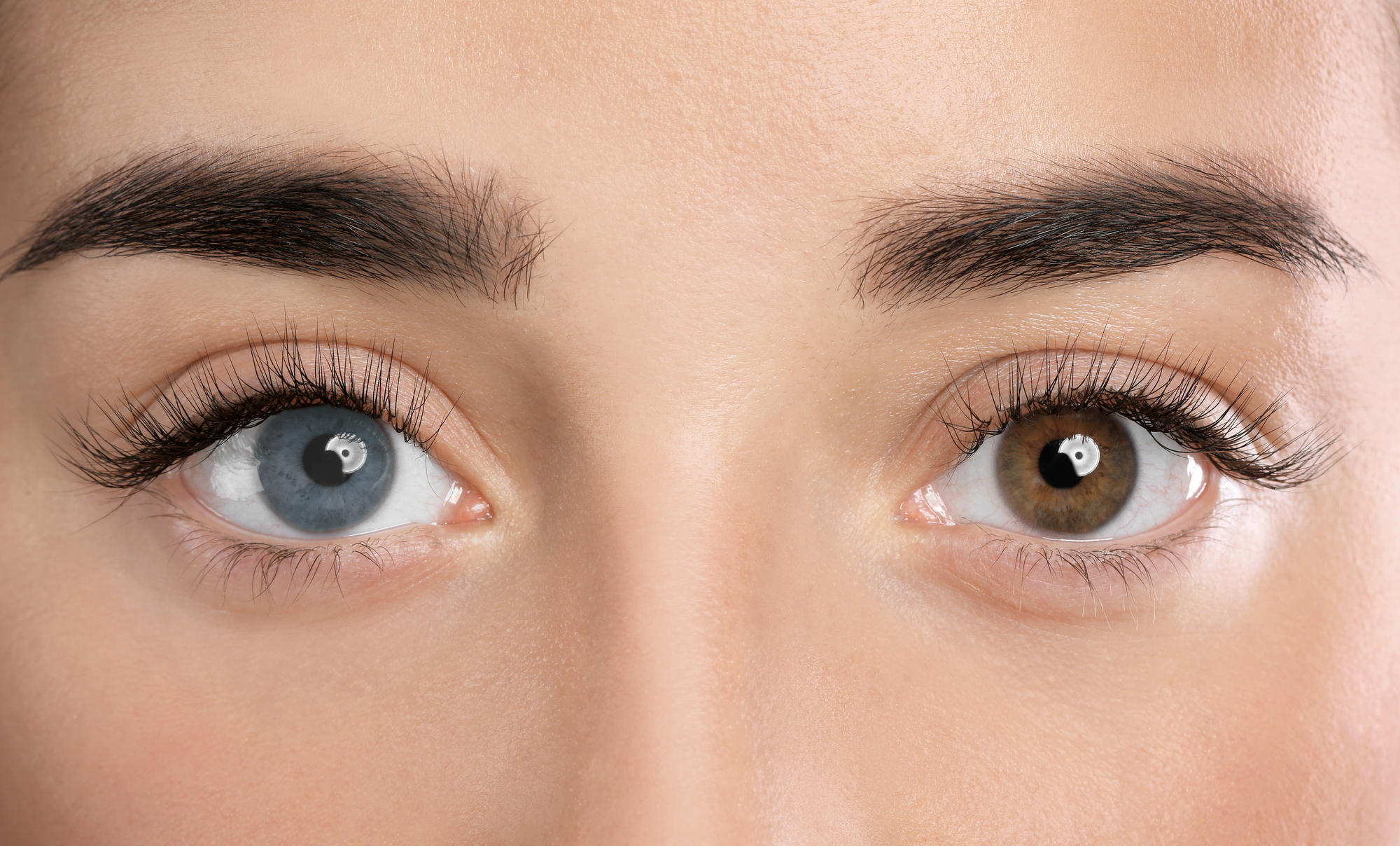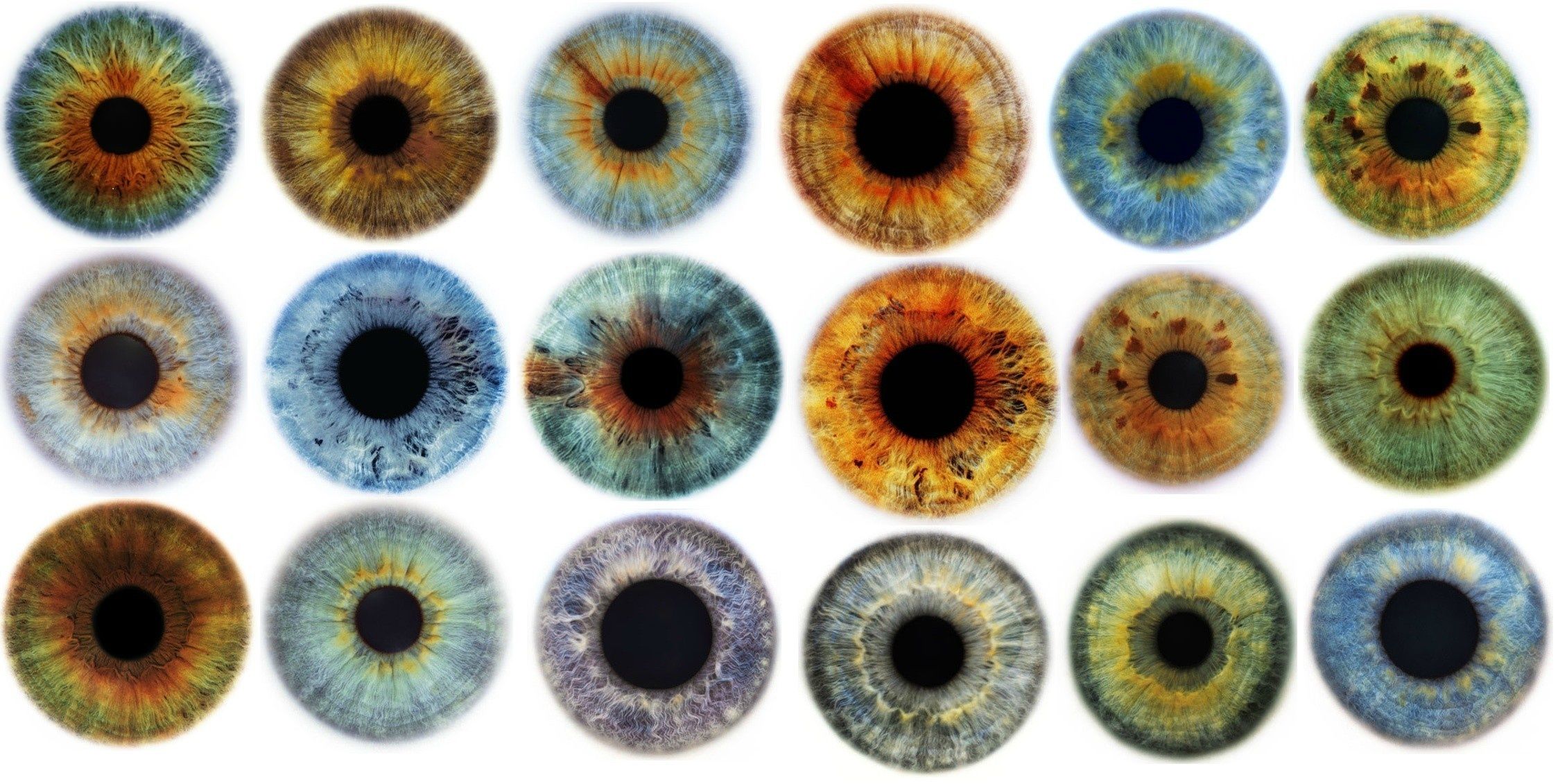Updated on September 24, 2024
Central Heterochromia (Different Color Eyes)


Vision Center is funded by our readers. We may earn commissions if you purchase something via one of our links.
What is Central Heterochromia?
Heterochromia is an eye condition characterized by color differences in your iris, the colored part of your eye.2 This can occur between the two eyes or within one eye.
Central heterochromia is when one eye contains multiple pigments. It can cause a color abnormality that stems from the pupil at the center of the eyes, like cat eyes. An uneven distribution of melanin in your iris can cause this condition.
The outer ring will almost always be blue or green. However, it's common for the inner ring to be gold or hazel, so the person may appear to have hazel eyes.
Causes of Heterochromia
Most of the time, central heterochromia happens randomly, without any real cause for concern.3
In very rare cases, heterochromia is linked to a congenital syndrome, such as2:
- Waardenburg syndrome
- Parry-Romberg syndrome
- Horner's syndrome
- Sturge-Weber syndrome
How is Central Heterochromia Diagnosed?
To be diagnosed with central heterochromia, you must see an opthalmologist. This eye doctor will do a routine eye exam to look for uneven or totally different pigment dispersion in your eyes.
During a routine eye exam, your doctor will:
- Conduct a visual test to check your eyesight
- Check for any physical abnormalities and unusual features in your eye
- Suggest additional tests such as optical coherence tomography (OCT), if needed
If you have an underlying medical condition or an eye injury that has caused heterochromia, your eye doctor may recommend a specific course of action. You may need to see another type of doctor to treat that specific condition.
Treatment for Central Heterochromia
There are no treatments for central heterochromia.3 Central heterochromia does not generally affect people’s eyesight, so treatment isn’t necessary.
Some people may choose to wear colored contact lenses in both eyes to change the color of their eyes. Or they may wear one colored contact lens to match the color of the other eye. Contacts are just for aesthetics and personal choice.
Central Heterochromia Prognosis
Most people with central heterochromia are perfectly healthy. The eye condition isn't typically known to affect their eye health, general health, or vision. Therefore, people who live with central heterochromia have an excellent prognosis.
That said, it’s important to talk to your eye doctor about changes in your eye color. You always want to rule out any underlying causes, even though they tend to be rare.
What Determines Eye Color?
Gene variations determine eye color. Most genes that are linked to eye color produce, transport, or store a pigment called melanin.4
The amount of melanin in the front layers of the iris also determines eye color.5 Someone with a lot of melanin might have brown eyes. On the other hand, those with less melanin may have a lighter eye color, like blue or green.
Wearing certain colors (especially bright colors that accentuate your eye color) can change the appearance of the color of your eyes. For example, while wearing a blue T-shirt does not make green eyes blue, the reflection can make them appear more bluish than greenish.
Other Types of Heterochromia

There are two other types of heterochromia. One affects the same eye, and the other affects both eyes:
Segmental (Sectoral) Heterochromia
Segmental heterochromia is also known as heterochromia iridum, sectoral heterochromia, or partial heterochromia.
It occurs when different areas of the same iris vary in pigment.3 For example, someone might have blue eyes with bits of brown or brown eyes with a patch of green.
Someone with this type of heterochromia might appear to have speckled eyes. The speckle can be very interesting, though it is not always obvious. You may not notice segmental heterochromia unless you look up close.
Complete Heterochromia
Complete heterochromia, or heterochromia iridis, is when the iris in one eye is a different color than the iris in the other. Someone who has totally different colored eyes might have complete heterochromia.3

For example, someone might have one blue eye and one brown eye. Or they might have one green eye and one blue eye. The color variation can be with any two colors.
Should I Be Worried About Heterochromia?
In most cases, there is no need to treat heterochromia. You may need treatment if there are underlying causes (congenital heterochromia). Otherwise, heterochromia does not typically affect someone’s eye health or vision.
How Rare is Central Heterochromia?
Heterochromia is a rare eye condition that's typically not a cause for eye health concerns. Fewer than 200,000 Americans have the condition.6
If you have central heterochromia, you aren't alone. Some famous people have heterochromia. Mila Kunis and Kate Bosworth are both believed to have it.

Summary
- Central heterochromia is an eye condition in which the iris of one eye is a different color than the other.
- It's usually harmless, though it may be linked to certain congenital syndromes.
- If you suspect you have central heterochromia, it's important to speak with your eye doctor to rule out any underlying causes.
In this article
6 sources cited
Updated on September 24, 2024
Updated on September 24, 2024
About Our Contributors
AnnaMarie, a staff writer for Vision Center, specializes in ophthalmology, optometry, and basic optic procedures, as well as preventative eye care. With a B.A. in Journalism & New Media and minors in Creative Writing and Women, Gender & Sexuality Studies from Gettysburg College, her goal is to enhance readers' understanding of eye health. She covers a wide range of topics, from selecting the right eyeglasses and contacts to managing and preventing eye diseases, and exploring vision correction surgeries.
Dr. Melody Huang is an optometrist and freelance health writer with a passion for educating people about eye health. With her unique blend of clinical expertise and writing skills, Dr. Huang seeks to guide individuals towards healthier and happier lives. Her interests extend to Eastern medicine and integrative healthcare approaches. Outside of work, she enjoys exploring new skincare products, experimenting with food recipes, and spending time with her adopted cats.

